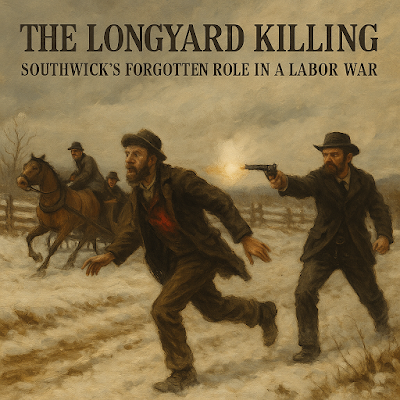Triple Loss: The 1894 Tragedy at Johnson Farm

Charles Johnson owned a sprawling farm in the rural Hillside district of Southwick, Massachusetts, just off what is now Charles Johnson Road. Isolated by a half-mile stretch from his nearest neighbor, the Johnson homestead stood in quiet solitude—a typical rural setting of the late 19th century. On the evening of January 10, 1894, Charles carried a lantern as he made his way to his barn to feed his livestock. As he tossed hay with a pitchfork, he accidentally knocked over the lantern. Within seconds, flames raced through the hay, igniting the barn into a massive blaze. Charles fought to save what he could, but the fire moved too fast. He was able to rescue only five of his twelve cattle before the barn was consumed. The flames quickly leapt from structure to structure, engulfing every outbuilding and finally overtaking the farmhouse itself. Inside the house lay the bodies of Charles’s elderly father and mother-in-law, both of whom had passed away earlier that day—one from pneumonia, th...





